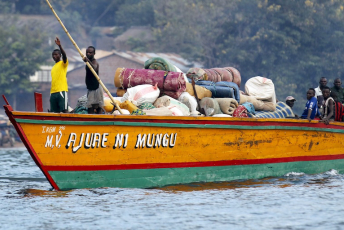The sandalwood tree in Northern Kenya has traditionally been used for its medicinal properties. Found mostly among pastoral and agro-pastoral communities, its leaves and bark are used by local communities to treat diarrhoea, stomach pains and hepatitis B. Over the past two decades sandalwood oil has also been increasingly used as the primary raw material in the production of perfumes. It is this trade that has minimal economic returns to local communities, along with negative consequences for local livelihoods.
In 2007, Kenya’s government banned the trade in the East African sandalwood tree due to increased over-exploitation that threatened the species. Recent studies in Kitui County have linked the uprooting of the tree to increased desertification, decreased crop production, a reduction in livestock feed and declining water resources.
There have been numerous media reports of tonnes of sandalwood being confiscated by the authorities over the past 20 years. Those arrested by the police, the Kenya Forest Service and the Kenya Wildlife Service include local community members, people hired to transport the harvested wood, and even police officers. Most of these arrests and confiscations have taken place in Laikipia, Marsabit, Isiolo and Samburu counties in Northern Kenya.
The arrest of community members highlights the collusion of locals in the sandalwood trafficking value chain. Recent studies show that community members receive as little as KES7 (US$0.065) per kilogram of harvested sandalwood from the traffickers. George Ewaton, a local administrator in Marti Division of Samburu North Sub-County, tells ENACT that it’s not entire communities that are involved, but certain members of households who are part of the sandalwood trafficking value chain. This includes their participation in harvesting, transporting, storing, protecting the illicitly harvested sandalwood from other criminal elements, and transferring it from villages to urban centres.
Ewaton notes that young people are involved in providing security, elders provide access to middlemen, and women offer their donkeys to transport harvested sandalwood for a small fee. Dr Eric Kioko, a social anthropologist at Kenyatta University, says women and the youth have specific roles in transporting and storing harvested sandalwood within their compounds. He also noted the role of boda boda (motorbike) riders in transporting it to urban centres such as Maralal, Kisima and Morijo. Here the wood is chopped into smaller pieces and repackaged into boxes.
Kioko says young people become involved in the illegal trade in Laikipia and Samburu counties for economic reasons. ‘The youth are increasingly involved in harvesting and protecting harvested sandalwood simply because they earn some money from these activities,’ he says. John Tineja, a leader in the Samburu community in Maralal, says the illegal trade in the wood is exacerbated by the easy availability of illicit arms among many pastoralist and agro-pastoralist communities in Northern Kenya. He says the youth use their illegal weapons to protect women against wild animals in the forests during harvesting.
They also use them to protect the harvested sandalwood once it has been moved into the villages, and to provide security by escorting the wood once it is loaded into trucks. He says local youth earn as much as KES20 000 (US$185) per truckload for their protection services. Sandalwood oil is the raw material used in the manufacture of perfumes and cosmetics for the international markets in India and the Arabian Gulf. The increased demand for sandalwood oil internationally has led to the co-option of Northern Kenya’s rural communities within the global value chain of the illegal sandalwood trade.
While the global demand has led to an increase in the price of sandalwood oil (US$3 000 per litre), local communities continue to be exploited as they sell it at low prices, while contributing to the damage of their ecosystems and reducing their loner-term well-being. This socio-ecological significance of the sandalwood tree for local communities requires a shift in the exploitative practices. Community-level institutional structures such as the councils of elders, youth and women’s leadership are well-placed to lead this shift for a more beneficial and sustainable sandalwood market value chain.
This would be in line with the Kenya Forestry Research Institute’s objective of cultivating the sandalwood tree for commercial purposes, and enabling the domestication and conservation of the tree for future generations. This can be done in collaboration with the Kenya Forest Service, civil society and the county governments of Samburu, Laikipia, Isiolo, Baringo and Marsabit. Similar community-led propagation approaches have been implemented in Fiji with modest success and may be worth considering in the Kenyan context.
Further, the protection of the sandalwood tree requires the implementation of legal and administrative measures that will deter the involvement of local community members in the illicit trade. Article 21 (e) of the Forest Conservation and Management Act provides for county governments to advise and help communities manage forests.
Section 92 of the Wildlife Conservation and Management Act, 2013 stipulates life imprisonment and a KES20 million (US$185 000) fine for anyone found with endangered or threatened species such as sandalwood. Further efforts at its commercial plantation in arid and semi-arid areas could ensure that communities benefit from this valuable tree and encourage its conservation in Kenya.
The combination of community, conservation, commercial and law enforcement endeavours offer hope for reversing the harms already felt by communities, and creating expanded, viable livelihoods options for rural communities. Implementation however will require much more than the current set of disparate efforts and competing interests.
Willis Okumu, Senior Researcher – East and Horn of Africa, ENACT Project, ISS








